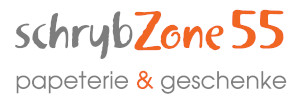Beschreibung
InhaltsangabeTABLE OF CONTENTS Foreword Acknowledgments Introduction Chapter One. The Balance between Security and Civil Rights 1.1 Mapping the Threats: Preventing Physical and Virtual Terrorist Attacks 1.2 Designing Policies to Address New Security Threats 1.2.1 Information warfare. 1.2.2 Data security. 1.2.3 Gathering information and surveillance. 1.2.4 Regulation of encryption products 1.2.5 Terror propaganda 1.3 Preserving Civil Liberties 1.3.1 The right to privacy 1.3.2 Freedom of expression 1.3.3 Enforcement. 1.4 Electronic Commerce and Innovation 1.4.1 Ramifications for research and development 1.4.2 Encryption regulation and electronic commerce Chapter Two. The Legal Situation: Prevention and Enforcement in the Information Age 2.1 The International Scene 2.1.1 Protection of the right to privacy 2.1.2 International regulation for protection of personal data 2.1.3 International regulation of encryption products 2.1.4 International regulation of decryption products 2.2 The United States 2.2.1 Protection of the right to privacy 2.2.2 Protection of the freedom of speech 2.2.3 American regulation of encryption products 2.2.4 American regulation of decryption products 2.3 The European Union 2.3.1 Protection of the right to privacy 2.3.2 EU regulation of encryption 2.3.3 EU regulation of copyright 2.4 Other Countries 2.4.1 Britain 2.4.2 Canada 2.4.3 Australia Chapter Three. Israel and Online Terrorism 3.1 The Right to Privacy 3.1.1 Search and seizure 3.1.2 Secret monitoring in Israeli law 3.2 Freedom of Speech 3.2.1 Liability of service providers 3.2.2 Enforcementof hacking prohibitions 3.3 Israeli Regulation of Encryption 3.3.1 The framework of the legal arrangements up to 1998 3.3.2 The framework of the legal arrangements after 1998 3.4 Freedom of Occupation 3.5 Property Rights Chapter Four. Technological Issues 4.1 What is Encryption? The Technological Basis 4.2 The Basic Principle of Encryption: Letter Replacement 4.3 Symmetrical Encryption 4.4 Asymmetrical Encryption: Public Key and Private Key 4.4.1 Analysis of the RSA method 4.5 How is Information Gathered on the Internet? 4.5.1 General background 4.5.2 Means of collecting information and monitoring the Internet 4.5.3 Collection of information on the server or the PC Chapter Five. Recommendations: Is There a Need for New Regulations? 5.1 The Existing System's Suitability for the Internet 5.2 Implementing Existing Legal Regulations for the Internet 5.3 Protecting the Right to Privacy 5.4 Liability of Internet service providers 5.5 Regulating Encryption Products to Protect Freedom of Occupation and Property Rights Concluding Remarks
Autorenportrait
Martin Charles Golumbic is Professor of Computer Science and Director of the Caesarea Edmond Benjamin de Rothschild Foundation Institute for Interdisciplinary Applications of Computer Science at the University of Haifa. He is the editor of the book "Advances in Artificial Intelligence, Natural Language and Knowledge-based Systems" (Springer, 1990), the author of the book "Algorithmic Graph Theory and Perfect Graphs" (second edition, Elsevier 2004), coauthor of a second book "Tolerance Graphs" (Cambridge University Press, 2004), and the founding editor-in-chief of the journal series "Annals of Mathematics and Artificial Intelligence" (Springer). Professor Golumbic received his Ph.D. in mathematics from Columbia University in 1975, and has previously held positions at New York University, Bell Laboratories, IBM Israel and Bar-Ilan University as well as visiting positions at Université de Paris, the Weizmann Institute of Science, and Ecole Polytechnique Fédérale de Lausanne. He has given guest lectures in 15 states in the U.S.A. and in 20 other countries, and he was elected as a Fellow of the European Artificial Intelligence society ECCAI in 2005.














